12 Shipwreck Sites That Tell Eerie Stories from the Deep
Shipwrecks have long been a source of mystery and fascination. From tragic tales of lost lives to unexplained disappearances, these sunken vessels hold eerie stories from the deep. Some are well-known, like the Titanic, while others remain shrouded in mystery, such as the Mary Celeste. Many of these wrecks have become popular dive sites, offering a glimpse into history for those brave enough to explore them. These underwater relics not only reveal the dangers of the sea but also remind us of the power of nature.
This post may contain affiliate links, which helps keep this content free. Please read our disclosure for more info.
RMS Rhone – Caribbean Ghost Ship
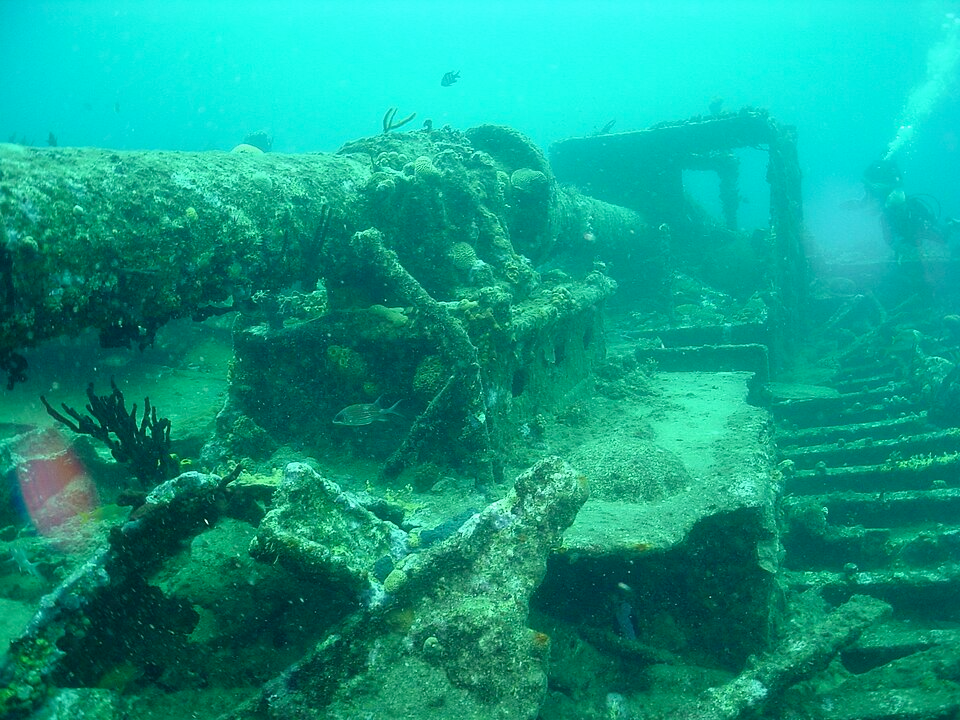
The RMS Rhone was a British Royal Mail Ship that sank during a hurricane in 1867 near Salt Island in the British Virgin Islands. The ship was caught in a sudden storm while anchored, and despite efforts to escape, it was driven onto rocks and broke apart. The wreckage lies in shallow waters, making it a popular site for divers. Many divers have reported eerie experiences, such as unexplained sounds and sudden temperature drops, adding to the ship’s ghostly reputation.
The RMS Rhone’s wreckage is remarkably well-preserved, with sections of the ship still intact, including the bow and stern. Marine life has made the site its home, creating a vibrant underwater ecosystem. The combination of the ship’s tragic history and its haunting presence beneath the waves continues to captivate those who venture into its depths.
U-352 – WWII German Submarine

The U-352 was a German submarine that was sunk off the coast of North Carolina in 1942 during World War II. After being spotted by a U.S. Coast Guard vessel, it was forced to surface and was subsequently attacked. The submarine sank quickly, and all but one of its crew perished. The wreck was discovered in 1975 and lies at a depth of about 110 feet, making it accessible to experienced divers.
Diving the U-352 offers a glimpse into the past, with the wreck still recognizable as a submarine. Artifacts from the crew’s daily life, such as personal items and equipment, remain scattered around the site. The eerie silence of the wreck, combined with its tragic history, makes it a poignant reminder of the lives lost during the war.
Hilma Hooker – Bonaire’s Sunken Smuggler

The Hilma Hooker was a cargo ship that sank off the coast of Bonaire in 1984 under mysterious circumstances. It was later discovered that the ship had been involved in drug smuggling, and authorities had been investigating it prior to its sinking. The wreck lies at a depth of about 60 feet, making it accessible to divers. Over the years, the site has become a popular dive spot, attracting those interested in its history and the mysteries surrounding its sinking.
The wreck of the Hilma Hooker is well-preserved, with much of the ship’s structure intact. Marine life has made the site its home, creating a vibrant underwater ecosystem. The combination of the ship’s intriguing history and its haunting presence beneath the waves continues to captivate those who venture into its depths.
USS Kittiwake – Cayman Islands Artificial Reef
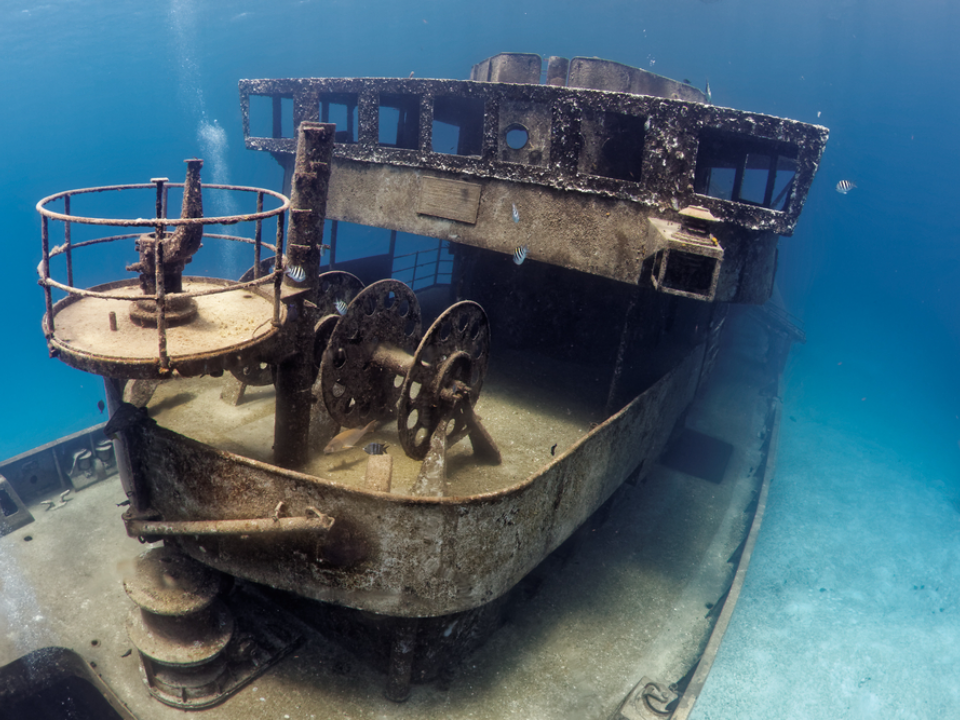
The USS Kittiwake was a U.S. Navy submarine rescue vessel that was intentionally sunk off the coast of Grand Cayman in 2011 to create an artificial reef. The ship had a long and distinguished career, including participating in the recovery operations following the 1986 Space Shuttle Challenger disaster. After being decommissioned, it was prepared and sunk to provide a habitat for marine life and a site for divers.
Diving the USS Kittiwake offers a unique experience, with the ship’s structure largely intact and accessible. The wreck has become a thriving artificial reef, supporting a diverse range of marine species. The combination of the ship’s historical significance and its role in marine conservation makes it a fascinating dive site.
SS Thistlegorm – Red Sea’s Wartime Relic
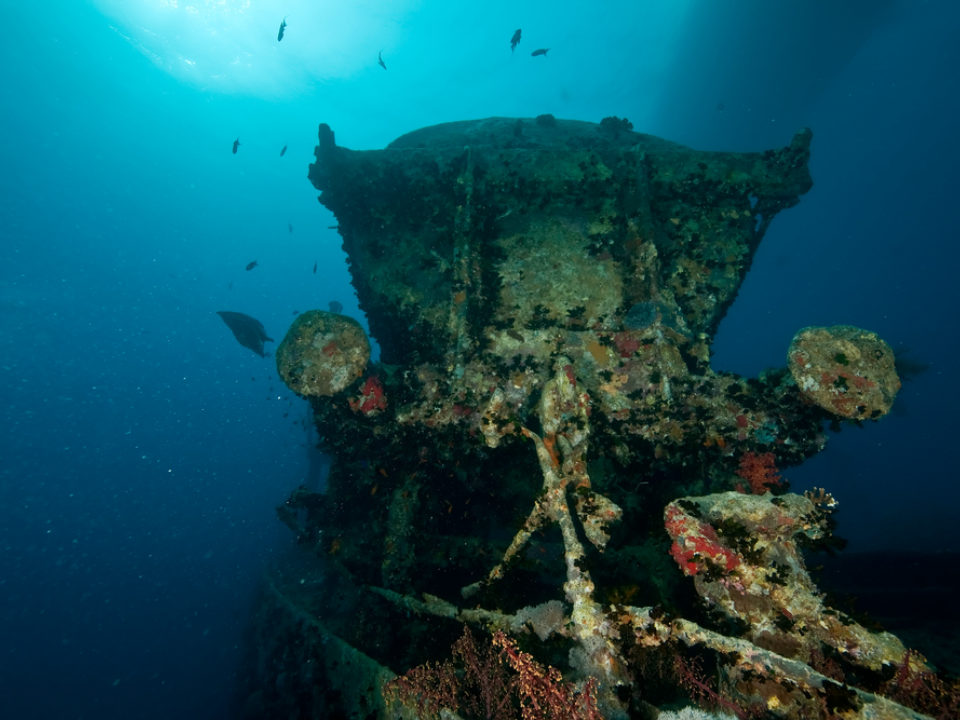
The SS Thistlegorm was a British merchant navy ship that was sunk by German bombers in 1941 while anchored in the Red Sea. The ship was carrying military supplies, including trucks, motorcycles, and ammunition, to support British forces in North Africa. The wreck was discovered in 1956 and has since become one of the most popular dive sites in the world.
Diving the SS Thistlegorm offers a glimpse into wartime history, with the ship’s cargo still largely intact. Marine life has made the site its home, creating a vibrant underwater ecosystem. The combination of the ship’s historical significance and its thriving marine life makes it a fascinating dive site.
SS Andrea Doria – The Italian Luxury Liner

The SS Andrea Doria was an Italian ocean liner that sank off the coast of Nantucket in 1956 after colliding with the MS Stockholm. The collision left the Andrea Doria with a massive hole in its side, and the ship sank just hours later. The wreck, lying at a depth of about 240 feet, is known for its luxury items and stunning artifacts scattered across the site.
The Andrea Doria is often regarded as one of the most iconic shipwrecks, attracting both treasure hunters and divers alike. Despite the tragic loss of life, the wreck remains largely intact, with many of the ship’s furnishings and artwork still visible. The eerie presence of the wreck, combined with its haunting history, makes it a challenging yet rewarding dive site for those brave enough to explore it.
The Titanic – The Unsinkable Ship
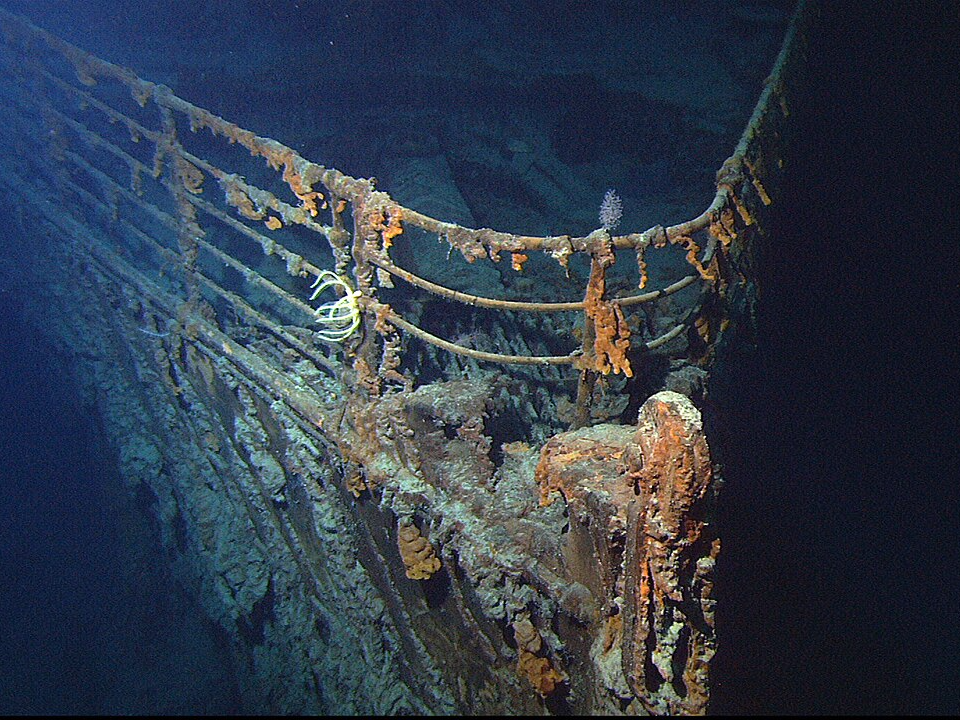
The Titanic is perhaps the most famous shipwreck in history, having sunk on its maiden voyage in 1912 after striking an iceberg in the North Atlantic. Over 1,500 people perished in the tragedy, making it one of the deadliest maritime disasters. The wreck was discovered in 1985 at a depth of about 12,500 feet, lying at the bottom of the ocean for over 70 years.
The Titanic’s wreckage has been extensively explored and documented, with numerous expeditions revealing haunting images of the ship’s remains. Despite its tragic history, the Titanic has become an enduring symbol of human ambition and the dangers of overconfidence. The ship’s story continues to captivate the world through movies, books, and deep-sea explorations.
The SS Yongala – Australia’s Underwater Time Capsule
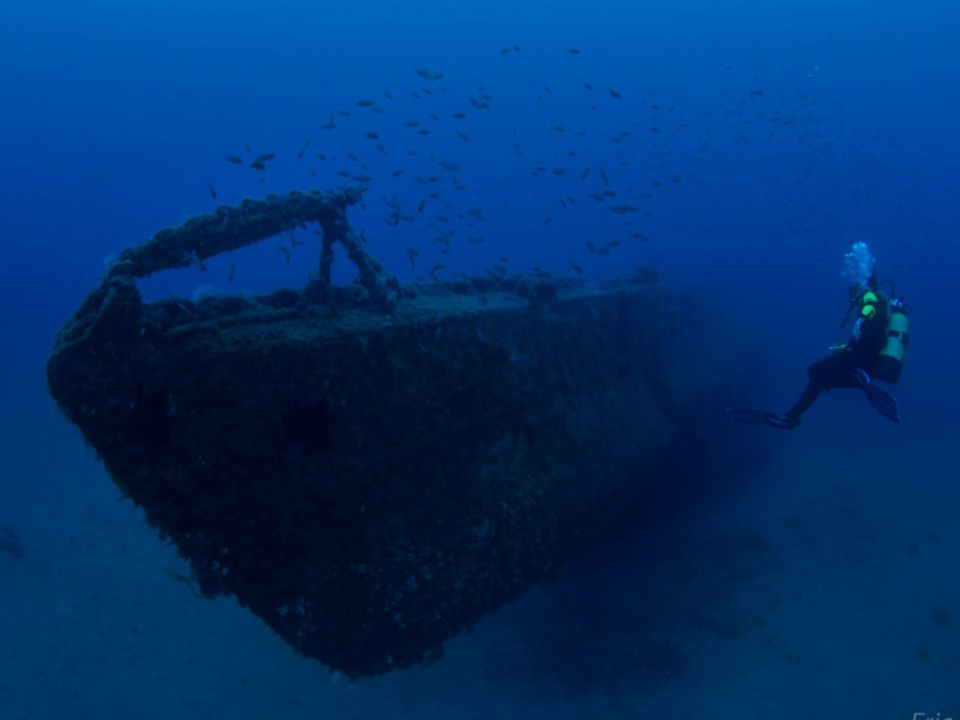
The SS Yongala sank in 1911 off the coast of Queensland during a powerful cyclone. All 122 passengers and crew were lost, and the wreck remained undiscovered for nearly 50 years. The ship now rests upright in about 90 feet of water, almost perfectly preserved by the surrounding environment.
Today, the SS Yongala is one of Australia’s most famous dive sites, covered in coral and home to giant groupers, sea turtles, and manta rays. Divers often describe the experience as eerie yet beautiful, with the ship’s structure still recognizable. This haunting wreck tells the story of a tragedy that became a thriving marine sanctuary.
The Zenobia – Cyprus’ Sunken Ferry
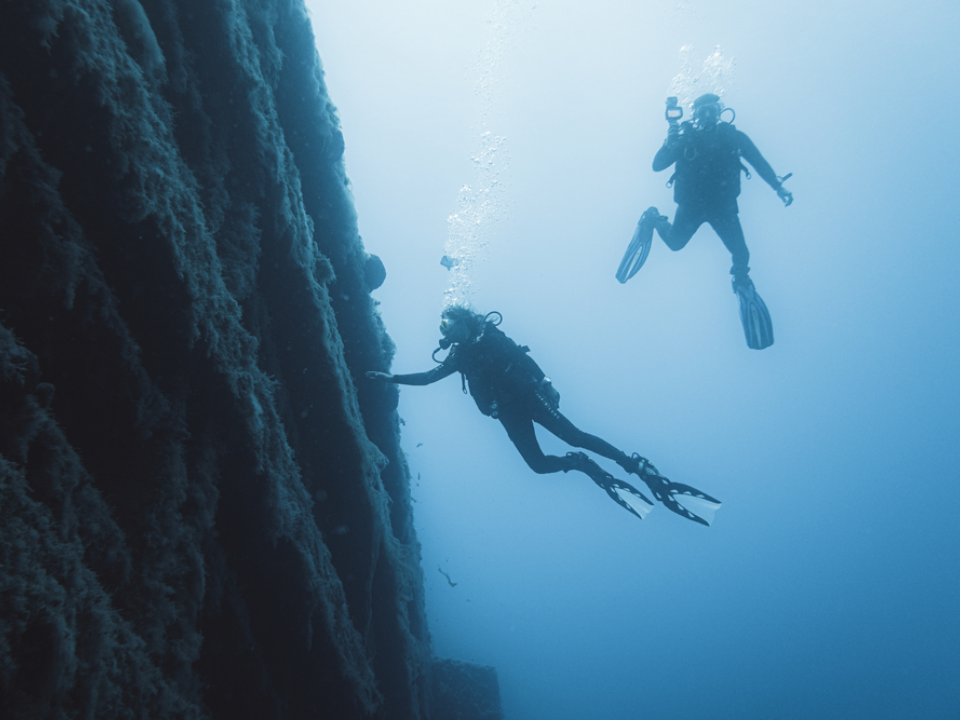
The Zenobia was a Swedish-built ferry that sank near Larnaca, Cyprus, in 1980 during its maiden voyage due to a ballast system malfunction. The ship, over 570 feet long, now lies on its port side at a depth of about 140 feet. Over 100 trucks and cargo remain trapped within its holds.
The Zenobia has become one of Europe’s top wreck diving sites, drawing thousands of divers every year. Its massive structure and preserved vehicles make it a surreal underwater museum.
The SS Empire Heritage – The Atlantic Oil Tanker
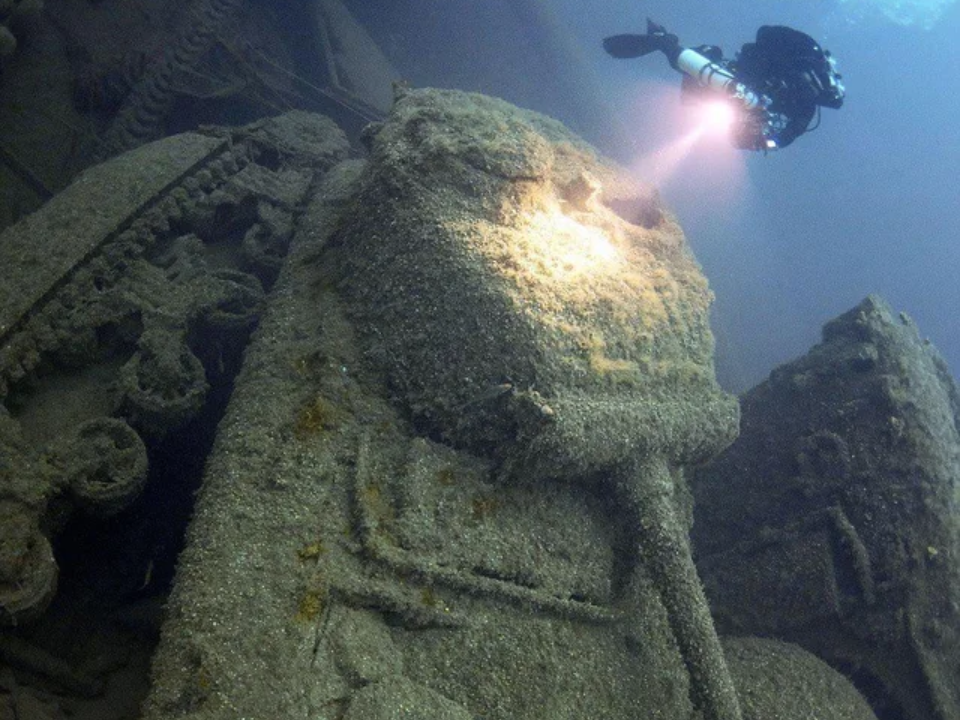
The SS Empire Heritage, a British oil tanker, was sunk by a German U-boat in 1944 near Malin Head, Ireland. The wreck was carrying Sherman tanks and other military supplies to support the war effort. Today, it lies about 220 feet underwater, with the tanks still visible around the wreck site.
This underwater graveyard is a breathtaking yet somber experience for divers exploring remnants of wartime history. The wreck has become home to a variety of marine species, adding to its eerie appeal.
The SS President Coolidge – Vanuatu’s Submerged Troopship
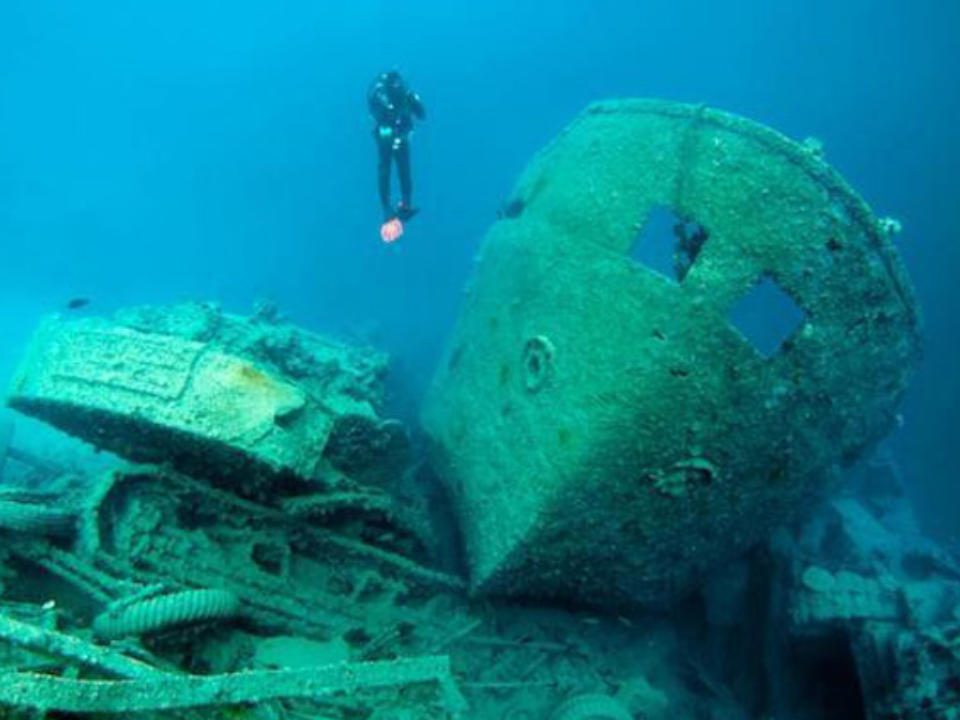
Originally a luxury ocean liner, the SS President Coolidge was converted into a troopship during World War II. It struck mines in 1942 while entering Espiritu Santo harbor and sank quickly, though most of the crew survived. The ship rests in shallow waters, making it easily accessible to divers.
The Coolidge is often called an underwater museum, filled with military equipment, vehicles, and personal artifacts. It is one of the largest, most complete shipwrecks in the Pacific.
The Britannic – Titanic’s Sister Ship
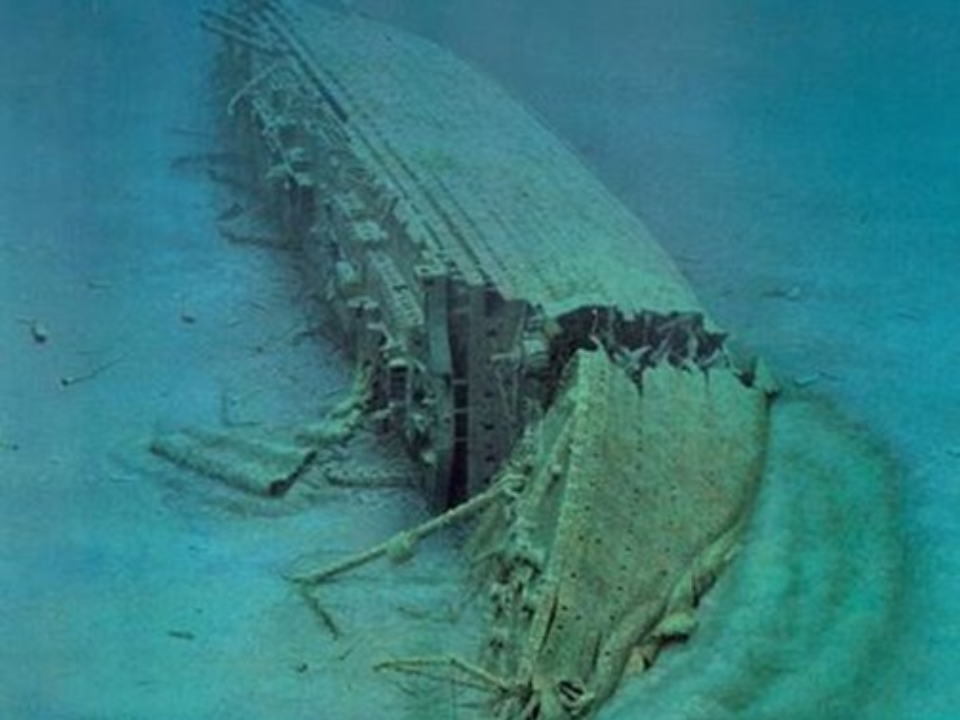
The Britannic, sister ship to the Titanic, was launched as a hospital ship during World War I. In 1916, it struck a mine near the Greek island of Kea and sank within an hour. Fortunately, most of the passengers survived, but the wreck remains one of the largest and best-preserved in the world.
The Britannic lies at a depth of about 400 feet and is accessible to professional divers. Its massive hull and near-intact structure make it an impressive sight.
This article originally appeared on Avocadu.
